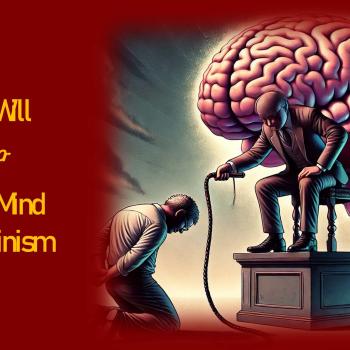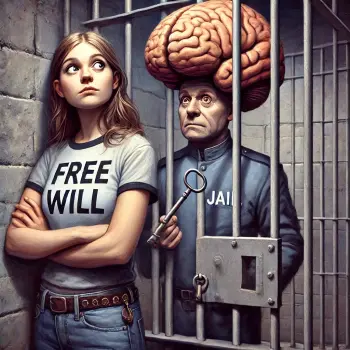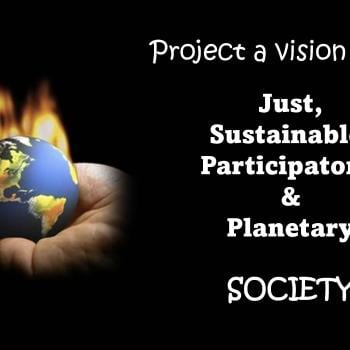Transhumanism vs Posthumanism and Postmodernism
H+ 10/ 1020. Religious Transhumanism
 Will the posthuman supersede and replace the human? Or, will the posthuman merely enhance the human? Just what does ‘trans’ in ‘transhumanism’ point to?
Will the posthuman supersede and replace the human? Or, will the posthuman merely enhance the human? Just what does ‘trans’ in ‘transhumanism’ point to?
At stake here is an existential question. “To be, or not to be?” was Hamlet’s way to ask the existential question. Today we ask: does humanity as we know it have a future? Will the human species be superseded and replaced by a post-human species? Is this what transhumanists are talking about? Will today’s humanity go down without a fight when posthumanity decides to render us obsolete?
Transhumanism vs Posthumanism. Postmodernism too. What is at stake for the future of humanity?
The Public Theologian and the Transhumanist
In this series on religious transhumanism and its critics, we shoulder the responsibility of the public theologian. In his spanking new book, Public Theology and Civil Society, Paul Chung offers us a nutshell description of public theology. “In a nutshell, public theology (theologica publica) is concerned with the public affairs or institutions of society (res publica) to promote the common good in society.” (Chung 2022, 11). On behalf of the common good, the public theologian subjects impactful movements such as transhumanism to discourse clarification, analysis, and evaluation. In the service of public theology, we filter the technological imperative–if we can do we should do it!–through a theological sieve of sin ‘n’ grace.
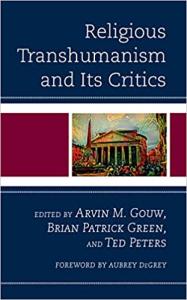 Along with my gumptious colleagues, bioethicist Brian Patrick Green and geneticist Arvin Gouw, we’ve just published an edited volume, Religious Transhumanism and Its Critics. Why, we asked a variety of scholars, would persons of faith board the transhumanist train? How far might they ride? In this Patheos series on religious transhumanism, we are asking more questions and deeper questions regarding a perceived rapprochement between H+ and RH+. Here are the questions and the questioned so far.
Along with my gumptious colleagues, bioethicist Brian Patrick Green and geneticist Arvin Gouw, we’ve just published an edited volume, Religious Transhumanism and Its Critics. Why, we asked a variety of scholars, would persons of faith board the transhumanist train? How far might they ride? In this Patheos series on religious transhumanism, we are asking more questions and deeper questions regarding a perceived rapprochement between H+ and RH+. Here are the questions and the questioned so far.
H+ 1. Is AI a shortcut to virtue or holiness?
H+ 2. The Tanshuman, the Posthuman, and the Truly Human
H+ 3. Radical Life Extension, Cybernetic Immorality, and Resurrection of the Body
H+ 4. Micah Redding on Evangelical Transhumanism
H+ 5. Lincoln Cannon on Mormon Transhumanism
H+ 6. Hava Tirosh-Samuelson on a Jewish perspective
H+ 7. Michael LaTorra on Buddhist Transhumanism
H+ 8. James Hughes on UU Transhumanism.
Both religion and transhumanism invite us to transformation. Should these two partner with one another? If so, under what qualifications?
But, what does posthumanism have to do with all this? How about metahumanism? How about postmodernism? Thank goodness there’s no metamodernism. Does all this make your head spin? It does mine.
Enhanced Human or Posthuman?
On the one hand, our transhumanist colleagues claim we will enhance human beings through technological advance. On the other hand, once we’ve passed through the Singularity a new posthuman species will emerge. After the singularity, “an entirely new species of gods will exist.” (Braxton, 2021, 8). Does this make the transhumanist a humanist or a posthumanist?
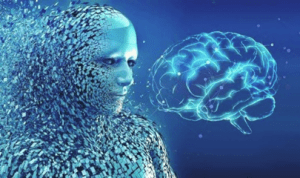 The H+ anticipation of cybernetic immortality raises this question most forcefully. When our minds have been uploaded into the computer cloud, says Hans Moravec, we will approach a liberated posthuman disembodied state. “Our thinking procedures might be totally liberated from any traces of our original body. But the bodiless mind that results, wonderful though it may be in its clarity of thought and breadth of understanding, would be hardly human: it will have become an AI” (Moravec 1997). Here is our destiny: a disembodied super-intelligent mind living in the digital cloud. Would this be human? Or, posthuman?
The H+ anticipation of cybernetic immortality raises this question most forcefully. When our minds have been uploaded into the computer cloud, says Hans Moravec, we will approach a liberated posthuman disembodied state. “Our thinking procedures might be totally liberated from any traces of our original body. But the bodiless mind that results, wonderful though it may be in its clarity of thought and breadth of understanding, would be hardly human: it will have become an AI” (Moravec 1997). Here is our destiny: a disembodied super-intelligent mind living in the digital cloud. Would this be human? Or, posthuman?
Transhumanism vs Posthumanism on Humanism
Here is what I think we observe. Despite the prospect of disembodied intelligence, transhumanism affirms and extrapolates on humanism rather than posthumanism. Doctrinal or ideological posthumanism rejects the human on behalf of something new. Curiously, it is transhumanism that enhances the human, whereas posthumanism replaces the human. Really? Well, the road ahead looks a bit foggy.
Francesca Ferrando, who is an expert on this matter, distinguishes philosophically and historically between transhumanism and posthumanism. Transhumanism is modern. Posthumanism is postmodern.
“Posthumanism can be approached as a post-humanism, a post-anthropocentrism and a post-dualism. It generates out of the deconstruction of the human, ad developed within the theoretical and political frame of Postmodernism and Post-Colonialism…historically, numerous human beings have not been fully recognized as humans….To further clarify, the deconstruction of the human doers in no way advocate for the destruction of actual humans, but rather, for the recognition of the human species as a plural entity, in inner and outer relations with, and to, alterity” (Ferrando, 2020, p. 2).
Ferrando is critical of the modern Enlightenment for its anthropocentrism which, unjustly, found justification for denying full humanity to each person. Some groups became marginalized. We need a more inclusive vision of the human that will incorporate plurality while sustaining plurality. Ferrando assures us that “in no way is violence against other humans supported by any of these movements” (Ferrando, 2020, p.3).
What are we driving at here? Well, the road forward will become clearer if we locate humanism along with modern post-Enlightenment culture on the same map. Our modern humanistic road has forked, however. The fork in the road is the split between subject and object. It was philosopher René Descartes (1596-1650)–known affectionately as the Father of Modern Philosophy–who pressed the start button on the modern world by disengaging our internal subjective minds from the objective world out there beyond our minds. The objective branch of the fork led us moderns to the natural sciences. The subjective branch of the fork led us to the humanities, religion, ethics, and personal taste. So, today, instead of driving a single smooth-running Tesla in a single direction, modern consciousness bounces down the highway of knowledge straddling two Harleys that are pulling us in different directions.
Posthumanists seek to yoke those two Harleys by re-embedding our subjectivity in our bodies. Our bodies, all posthumanists observe, are already interactive with the entire ecology of the objective world. They seek to overcome binaries such as the split between subject and object, between genders, between the human and the natural worlds, and especially the split between mind and body. Posthumanist Harley riders no longer want the wind that blows disembodied and autonomous rationality in their face.
 “Human being is first of all embodied being, and the complexities of this embodiment mean that human awareness unfolds in ways very different from those of intelligence embodied in cybernetic machines,” writes N. Katherine Hayles at Duke University (Hayles 2021, 163). The posthumanist will not pump petrol into the tank of a transhumanistic disembodied superintelligence. [Art: Soul Jazz, “Trees Speak”]
“Human being is first of all embodied being, and the complexities of this embodiment mean that human awareness unfolds in ways very different from those of intelligence embodied in cybernetic machines,” writes N. Katherine Hayles at Duke University (Hayles 2021, 163). The posthumanist will not pump petrol into the tank of a transhumanistic disembodied superintelligence. [Art: Soul Jazz, “Trees Speak”]
In the Metahumanist Manifesto, Jaime del Val and Stefan Lorenz Sorgner make the posthumanist agenda clear. “Metahumanism is a critique of some of humanism’s foundational premises such as the free will, autonomy and superiority of anthropoid due to their rationality….we attempt to finally overcome the Cartesian split between body and mind, object and subject, by proposing a view of the mind as an embodied relational process” (Val 2021, 295). In effect, by incarcerating the mind in the body this way, the metahumanist-posthumanist threatens to privatize the seemingly universal thoughts that the intelligent mind has been able to entertain.
In sum, transhumanism is humanist whereas posthumanism is posthumanist. Really? Yes, really.
For the transhumanist, the summum bonum is human rationality funded by intelligence. Intelligence is idealized as the dis-embedded perhaps even uploaded and autonomous mind. For the posthumanist or metahumanist, in contrast, only an intelligence embedded in a body is worthy of superseding our modern chapter in human history. One might expect the opposite to be the case, but this is where our situation stands.
Postmodern Supersessionism
Will the modern period be superseded by a postmodern period? Is this the same thing as the supersession of the posthuman beyond the human? No, not quite.
Let’s pause for a moment to straighten out some vocabulary. Just what does postmodernism mean? Because of the ‘post’ and the ‘ism’, obviously, it’s an ideology that wants us to supersede the parameters of the modern period. By modernity we mean the period beginning with Descartes’ split between subject and object. As mentioned above, the university assigned to objectivity the natural sciences. And to subjectivity the university assigned the humanities, arts, music, philosophy, religion, and ethics. The modern era also includes morally suspect traits such as colonialization, industrialization, rationalization, and capitalization.
Please keep in mind that there are two brands of postmodernism. One is holistic. Holistic postmodernism seeks to overcome the subject-object split by thinking of the human person as a whole, complete with body, mind, and spirit. Our rational capacity is embedded in our body, tradition, language, and experience.
In addition, holism heals. You’ll find holistic postmodern thinking in integrative medicine, philosophical hermeneutics, and new age mysticism. Holistic postmodernists think of our planet and its ecosystem as a whole. And, holistic prescriptions are key to healing divisions, rivalries, and the ecological crisis.
 The second much more virulent form of postmodernism is critical theory or, most commonly, deconstructionist postmodernism. The deconstructionist is a pluralist and relativist. Like the holist, the critical or deconstructionist postmodernist wants to overcome the subject-object split. But, in this case, objective rationality is simply cut off. The objective is replaced by the subjective, especially the subjective perspective of selected groups. The objectivity of science and rationality comes under suspicion. Modern scientific and universalist thinking gets deconstructed to reveal the role knowledge plays in subjugation of marginalized groups by the dominant group. Claims of objective universality are contested or flatly rejected on behalf of local knowledges arising from marginalized groups. All knowing is relative. No single metanarrative has the right to claim universality. So says the deconstructionist postmodernist.
The second much more virulent form of postmodernism is critical theory or, most commonly, deconstructionist postmodernism. The deconstructionist is a pluralist and relativist. Like the holist, the critical or deconstructionist postmodernist wants to overcome the subject-object split. But, in this case, objective rationality is simply cut off. The objective is replaced by the subjective, especially the subjective perspective of selected groups. The objectivity of science and rationality comes under suspicion. Modern scientific and universalist thinking gets deconstructed to reveal the role knowledge plays in subjugation of marginalized groups by the dominant group. Claims of objective universality are contested or flatly rejected on behalf of local knowledges arising from marginalized groups. All knowing is relative. No single metanarrative has the right to claim universality. So says the deconstructionist postmodernist.
In the critical or deconstructionist brand of postmodernism, the marginalized groups become the focus of moral concern. The marginalized are sometimes dubbed the subaltern. The term, subaltern, comes from Italian Marxist political activist, Antonio Gramsci. Gramsci formulated the idea of the subaltern during the era of Benito Mussolini’s National Fascist Party. “The subaltern classes, by definition, are not unified and cannot unite until they become a state,” said Gramsci. “Their history, therefore, is intertwined with that of civil society, and thereby with the history of states and groups of states” (Gramsci 1999, 202). By giving privilege to the subaltern in society and supporting empowerment of a wide variety of subaltern groups, the critical postmodernist supports a pluralistic vision rather than a holistic vision of our planetary society.
As an aside, deconstructionism has become a ping pong ball in the clack-clack volley between Progressive and Evangelical Protestants. Progressives are for it. Evangelicals are against it. In the religious ping pong game, deconstructionism is reduced to undermining the pillars of faith through doubt. But this is irrelevant to the existential question at hand: will the posthuman replace the human?
Are Transhumanists Modernists or Postmodernists?
When it comes to our discourse clarification regarding transhumanism, then, who is participating? Not the holistic postmodernists. Only the deconstructionist postmodernists.
Now that we’re clear on this, let’s get back to the overlap between transhumanism and posthumanism. It is my judgement that the mindset of the transhumanist is clearly modern and not postmodern. Why? Because of the H+ reverence for intelligence. And, because of the assumption that our mind is an information pattern that can be lifted off our biological substrate and placed on either a silicon substrate or uploaded digitally into the cloud. The assumption that mind can be severed from body constitutes a contemporary form of Descartes’ substance dualism that split mind from body. Regardless of ‘trans’ suggesting supersession, the transhumanist thinks like a modern. Not like either a holistic or deconstructionist postmodern.
Will the Post-Human be the Postmodern Human?
“’Post’, with its dual connotation of superseding the human and coming after it, hints that the days of the human may be numbered,” says Katherine Hayles. (Hayles 2021, 162). In light of this, Cary Wolfe, director of the Center for Critical and Cultural Theory at Rice University, steps across a historical threshold. Posthumanism “names a historical moment in which the decentering of the human by its imbrication in technical, medical, informatic, and economic networks is increasingly impossible to ignore” (Wolfe 2021, 239-240). We may have been biological beings throughout evolutionary history, but we are now crossing a threshold into the era of the hybrid. What has been the epoch of the Anthropocene is about to be replaced with the posthuman cyborg.
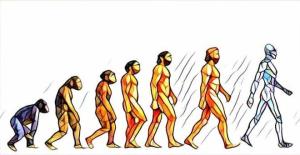 The concept of evolution provides the chassis on which both transhumanism and posthumanism build their vehicles to the future. Does evolutionary anthropology add anything to this alleged supersession? “Evolutionary anthropology,” as described by Wolfgang Welsch in the Journal of Posthuman Studies (2017), “shows that humans are inherently worldly beings, deeply rooted in the process of evolution, and therefore participants in the process of life that share a great many traits with other living beings….Turning to the scientific arguments of evolutionary anthropology might help posthumanism to become more solid. In an evolutionary perspective, two further main points of posthumanism—the fusion of human and artificial intelligence and human enhancement—appear quite natural. In cosmic and biotic evolution, matter and mind were never totally distinct, but coevolved, and enhancement was constitutive to human evolution from its beginning some million years ago. Evolutionary anthropology has a lot to offer to posthumanism” (Welsch 2017).
The concept of evolution provides the chassis on which both transhumanism and posthumanism build their vehicles to the future. Does evolutionary anthropology add anything to this alleged supersession? “Evolutionary anthropology,” as described by Wolfgang Welsch in the Journal of Posthuman Studies (2017), “shows that humans are inherently worldly beings, deeply rooted in the process of evolution, and therefore participants in the process of life that share a great many traits with other living beings….Turning to the scientific arguments of evolutionary anthropology might help posthumanism to become more solid. In an evolutionary perspective, two further main points of posthumanism—the fusion of human and artificial intelligence and human enhancement—appear quite natural. In cosmic and biotic evolution, matter and mind were never totally distinct, but coevolved, and enhancement was constitutive to human evolution from its beginning some million years ago. Evolutionary anthropology has a lot to offer to posthumanism” (Welsch 2017).
What yokes the two Harleys on the road to knowledge is evolutionary history, a history that continues today. “The transhuman is a biological-technological organism, a transformation of the human species that continues to evolve with technology,” says Natasha Vita-More. Both transhumanists and posthumanists put their faith in evolutionary advance as well as technological advance.
Conclusion
Our topic in this post? Transhumanism vs Posthumanism and Postmodernism.
Discourse clarification in this Patheos post has attempted something quite modest. Alas, all we in the name of public theology have done is clarify how certain terms are used such as humanism, transhumanism, posthumanism, and postmodernism. In an important sense, transhumanists carry forward the central values of the modern epoch such as the subject-object split and the celebration of rational intelligence even in its disembodied form.
Posthumanists, whether of the holistic or deconstructionist brand, want to bridge the subject-object gap. The deconstructionist postmodernists bridge the cap by eliminating objectivity. They do so by re-embedding subjectivity inescapably in the physical body, crowning subjective perspective as the sole king of consciousness, knowledge, and social power. The posthuman being envisioned by the deconstrutionist postmodernist does not resemble in any important way the envisioned posthuman mind that emerges from the transhumanist’s Singularity.
In the context of this global discourse, what is a public theologian to do? The task of worldview construction comes to mind. The public theologian should construct a realistic worldview that combines both idealized human nature and the actual human nature we see come to expression in history. The ideal human nature is exemplified in Jesus Christ, the eikon tou Theou, the image of God in incarnate human form. The actual or historical human nature we experience and observe daily is fallen, corrupt, and dangerous. The dialectic between the image of God (imago Dei) and our sinful proclivities provides the dynamics of the human species as we have come to know it. The transhumanist agenda of enhancing human intelligence in either embodied or disembodied form will contribute nothing to healing the rift between sinful humanity and the imago Dei. We can safely forecast Humanity Plus will include a plus of potential for avarice, violence, and destruction just as it has during the history of Humanity Minus.
▓
 Ted Peters directs traffic at the intersection of science, religion, and ethics. Peters is an emeritus professor at the Graduate Theological Union, where he co-edits the journal, Theology and Science, on behalf of the Center for Theology and the Natural Sciences, in Berkeley, California, USA. He authored Playing God? Genetic Determinism and Human Freedom? (Routledge, 2nd ed., 2002) as well as Science, Theology, and Ethics (Ashgate 2003). He is editor of AI and IA: Utopia or Extinction? (ATF 2019). Along with Arvin Gouw and Brian Patrick Green, he co-edited the new book, Religious Transhumanism and Its Critics hot off the press (Roman and Littlefield/Lexington, 2022). Soon he will publish The Voice of Christian Public Theology (ATF 2022). See his website: TedsTimelyTake.com.
Ted Peters directs traffic at the intersection of science, religion, and ethics. Peters is an emeritus professor at the Graduate Theological Union, where he co-edits the journal, Theology and Science, on behalf of the Center for Theology and the Natural Sciences, in Berkeley, California, USA. He authored Playing God? Genetic Determinism and Human Freedom? (Routledge, 2nd ed., 2002) as well as Science, Theology, and Ethics (Ashgate 2003). He is editor of AI and IA: Utopia or Extinction? (ATF 2019). Along with Arvin Gouw and Brian Patrick Green, he co-edited the new book, Religious Transhumanism and Its Critics hot off the press (Roman and Littlefield/Lexington, 2022). Soon he will publish The Voice of Christian Public Theology (ATF 2022). See his website: TedsTimelyTake.com.
This fictional spy thriller, Cyrus Twelve, follows the twists and turns of a transhumanist plot.
▓
Bibliography
Braxton, Donald, 2021. Religion Promises but Science Delivers. The Fourth R: Westar Institute 34:3: 3-9.
Chung, Paul S., 2022. Public Theology and Civil Theology: Constructive Formation. New York: EBL.
Ferrando, Francesca, 2020. “Leveling the Posthuman Playing Field,” Theology and Science 18:1 (February) 1-6.
Gramci, Antonio, 1999. Selections from the Prison Notebooks. London: The Electric Book Company.
Hayles, Katherine. 2021. “What does it mean to be posthuman? (1999).” In Posthuman Studies Reader, by eds Evi D. Sampanikou and Jan Stasieńko, 161-165. Basel: Schwabe Verlag.
Moravec, Hans, 1997. The Senses Have No Future. Web Report.
Val, Jaime del and Stefan Lorenz Sorgner. 2021. “A Metahumanist Manifesto.” In Posthuman Studies Reader, by eds Evi D. Sampanikou and Jan Stasieńko, 295-297. Basel: Schwabe Verlag.
Vita-More, Natasha, 2008. Transhumanist Manifesto. https://natashavita-more.com/transhumanist-manifesto/.
Welsch, Wolfgang. 2017. Journal of Posthuman Studies 1:1.
Wolfe, Cary. 2021. “What is Posthumanism? (2010).” In Posthuman Studies Reader, by eds Evi D. Sampanikou and Jan Stasieńko, 235-250. Basel: Schwabe Verlag.




